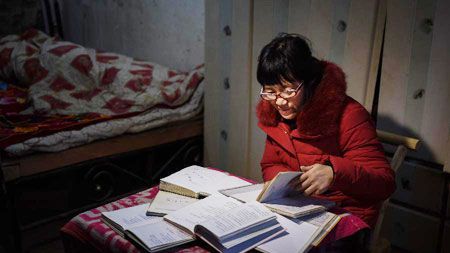计算机模拟人脑白日梦模型
|
Scientists have created a virtual model of the brain that daydreams like humans do. Researchers created the computer model based on the dynamics of brain cells and the many connections those cells make with their neighbors and with cells in other brain regions. They hope the model will help them understand why certain portions of the brain work together when a person daydreams or is mentally idle(闲置的). This, in turn, may one day help doctors better diagnose and treat brain injuries. "We can give our model lesions(损伤) like those we see in stroke or brain cancer, disabling groups of virtual cells to see how brain function is affected," said senior author Maurizio Corbetta, MD, the Norman J. Stupp Professor of Neurology at Washington University School of Medicine in St. Louis. "We can also test ways to push the patterns of activity back to normal." The study is now available online in The Journal of Neuroscience. The model was developed and tested by scientists at Washington University School of Medicine in St. Louis, Universitat Pompeu Fabra in Barcelona, Spain, and several other European universities including ETH Zurich, Switzerland; University of Oxford, United Kingdom; Institute of Advanced Biomedical Technologies, Chieti, Italy; and University of Lausanne, Switzerland. Scientists first recognized in the late 1990s and early 2000s that the brain stays busy even when it's not engaged in mental tasks. Researchers have identified several "resting state" brain networks, which are groups of different brain regions that have activity levels that rise and fall in sync when the brain is at rest. They have also linked disruptions in networks associated with brain injury and disease to cognitive problems in memory, attention, movement and speech. The new model was developed to help scientists learn how the brain's anatomical(解剖的) structure contributes to the creation and maintenance of resting state networks. The researchers began with a process for simulating small groups of neurons, including factors that decrease or increase the likelihood that a group of cells will send a signal. "In a way, we treated small regions of the brain like cognitive units: not as individual cells but as groups of cells," said Gustavo Deco, PhD, professor and head of the Computational Neuroscience Group in Barcelona. "The activity of these cognitive units sends out excitatory signals to the other units through anatomical connections. This makes the connected units more or less likely to synchronize their signals." |








